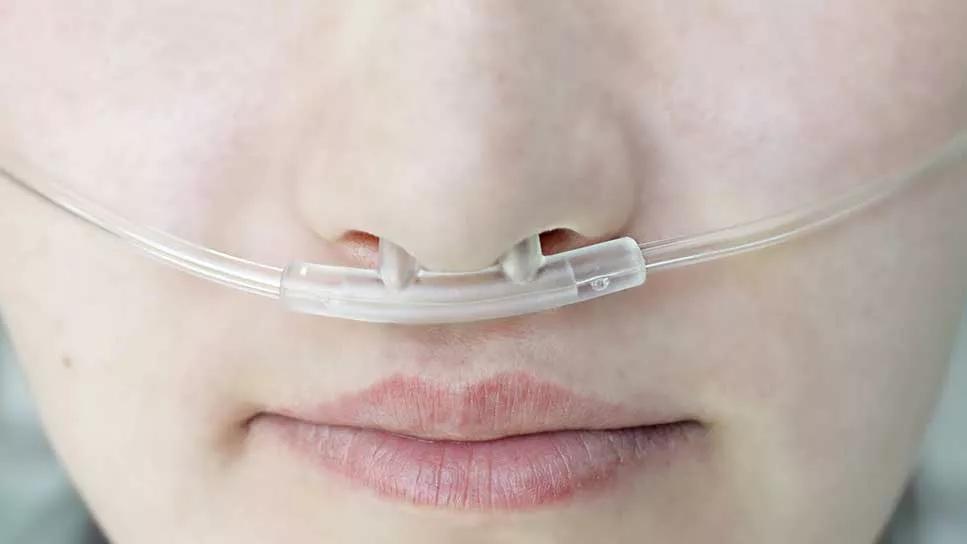Advertisement
Get improved quality of life and breathe better

In general, regular exercise offers many health benefits.
Advertisement
Cleveland Clinic is a non-profit academic medical center. Advertising on our site helps support our mission. We do not endorse non-Cleveland Clinic products or services. Policy
For people living with chronic obstructive pulmonary disease (COPD) — a family of chronic, progressive lung diseases that includes chronic bronchitis and emphysema — staying active is especially important.
A COPD flare-up can be very serious and even land you in the emergency room. But you can take steps — literally — to avoid that urgent care trip by adding regular exercise to your weekly routine.
Let’s take a closer at exercise and COPD with pulmonologist Humberto Choi, MD.
Whether your COPD is mild, moderate or severe, regular exercise can ease your symptoms. These include shortness of breath, chronic cough, fatigue, wheezing and chest tightness, says Dr. Choi.
Exercise, especially aerobic exercise, can also boost your quality of life while providing benefits like:
For mild COPD, try a light cardio program, such as walking or swimming. Dr. Choi suggests working up to a routine with 30 minutes of activity five days a week. This benefits you in three ways:
If your COPD is moderate or severe, a pulmonary rehabilitation program can be a life-changer. “The hardest part of my job is convincing people to go to pulmonary rehabilitation,” shares Dr. Choi. “But I’ve never had anybody who went to rehab who didn’t love it.”
In pulmonary rehab, an expert team helps create an exercise program tailored to your needs. A respiratory therapist trained in exercise physiology first tests your exercise capacity, or what level of activity you’re up for doing. Then, the team determines a routine that fits your areas.
Advertisement
Most pulmonary rehabilitation programs focus on breathing exercises, cardio exercise and resistance training, as well as proper use of inhalers. Typically, you participate in three weekly sessions for eight to 10 weeks.
Once you complete the program, your exercise capacity is reassessed. The team then helps you develop a year-long exercise plan to sustain your progress. Dr. Choi says the success of the program convinces people to stick with it.
“It is important for people to continue to apply everything they learned during the rehab program — especially continuing to exercise — so the benefit is long-term,” he adds.
The benefits of completing a pulmonary rehabilitation program are many and lasting. They include:
“You’ll feel better at the end of the program and learn more about your lung condition,” reassures Dr. Choi. “People also tend to have fewer hospitalizations than people who don’t complete rehabilitation.”
If you’re not a candidate for pulmonary rehabilitation, regular exercise such as walking will still benefit you.
So, are you ready to get started? Here are a few types of exercise that often work wonders if you have COPD.
Stretching your arms and legs before and after exercising helps prepare your muscles for activity and helps prevent injury and muscle strains. Regular stretching also increases your range of motion and flexibility.
This type of exercise strengthens your heart and lungs while improving your body’s ability to use oxygen. Over time, aerobic exercise can help decrease your heart rate and blood pressure while improving your breathing (as your heart won’t have to work as hard during exercise).
Aerobic exercises include:
Advertisement
These are repeated muscle contractions (tightening) until your muscle becomes tired. Strengthening exercises for the upper body are especially beneficial for people living with COPD, as they help increase the strength of your respiratory muscles.
The frequency of an exercise program is how often you exercise. In general, to achieve maximum benefits, you should gradually work up to an exercise session lasting 20 to 30 minutes at least three to four times a week. Exercising every other day will help you keep a regular exercise schedule.
Always breathe slowly to save your breath. Inhale through your nose, keeping your mouth closed. This warms and moisturizes the air you breathe and at the same, time filters it.
Know this, too:
If you’re interested in pulmonary rehabilitation, ask your doctor to refer you to a program that follows American Heart Association guidelines. Choose either a COPD-specific program or one that’s staffed by people experienced in COPD.
Exercise can seem daunting, but it can make living with COPD much easier. “You may think you’re not up for it — but you won’t regret it,” encourages Dr. Choi.
Advertisement
Learn more about our editorial process.
Advertisement

Stretch before and after your workouts for maximum benefits, but your pre-workout stretches should be different from your post-workout stretches

Treatments have improved outcomes for a condition once viewed as fatal

This low-impact, full-body workout builds strength and stamina while reducing stress

Exercising can actually improve arthritis symptoms — and low-impact exercises are best

Bulgarian split squats, hack squats and goblet squats are just a few of the moves you can try

While walking, be mindful of your body, your mind, your place in the world and all five of your senses as you pave a path forward, one step at a time

Squat smart with proper technique, including a neutral spine, wide knees and an engaged core

This important step gives your body time to return to its resting state while reducing muscle cramps, dizziness and injury

Focus on your body’s metabolic set point by eating healthy foods, making exercise a part of your routine and reducing stress

PFAS chemicals may make life easier — but they aren’t always so easy on the human body

While there’s little risk in trying this hair care treatment, there isn’t much science to back up the claims